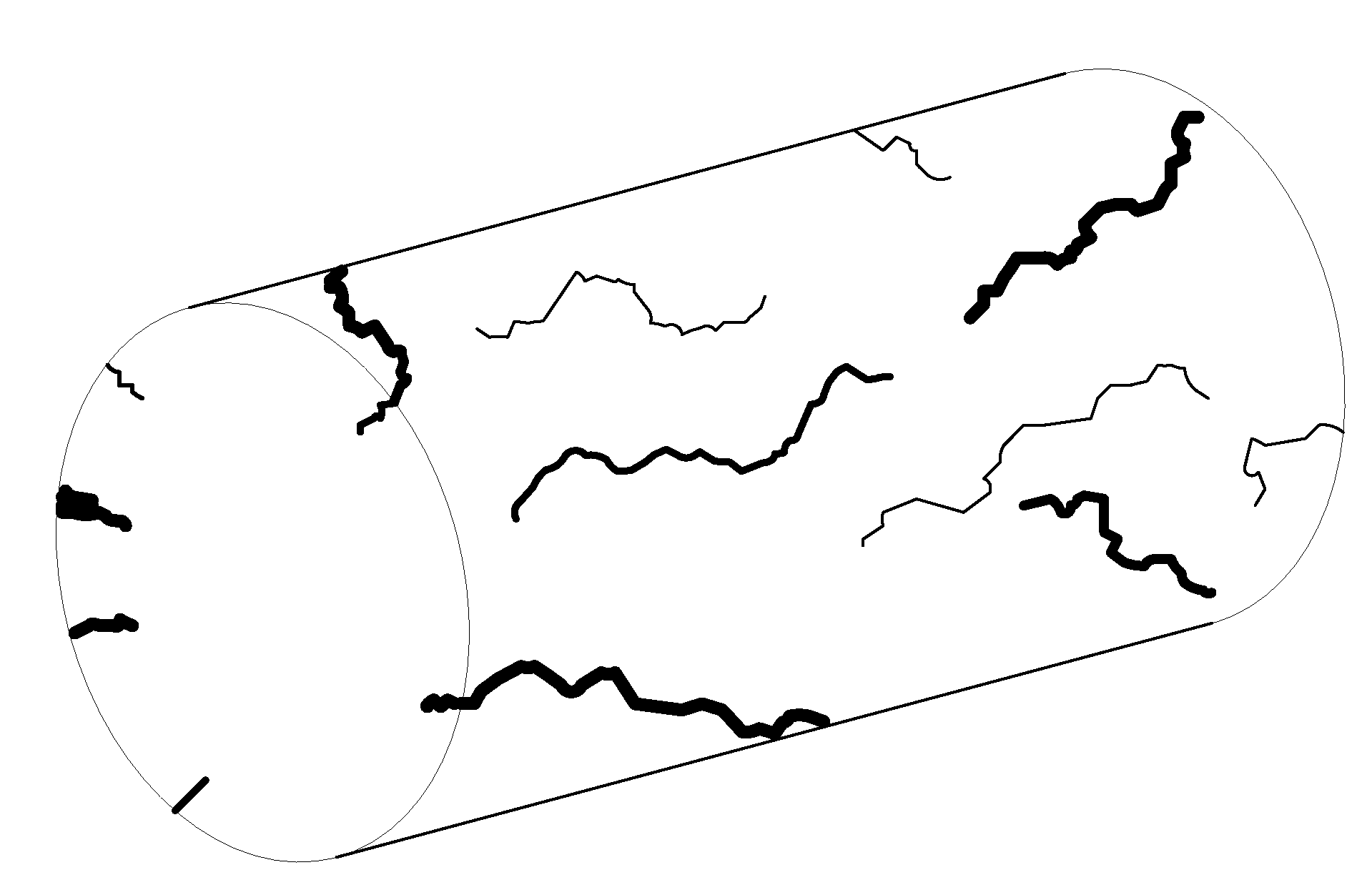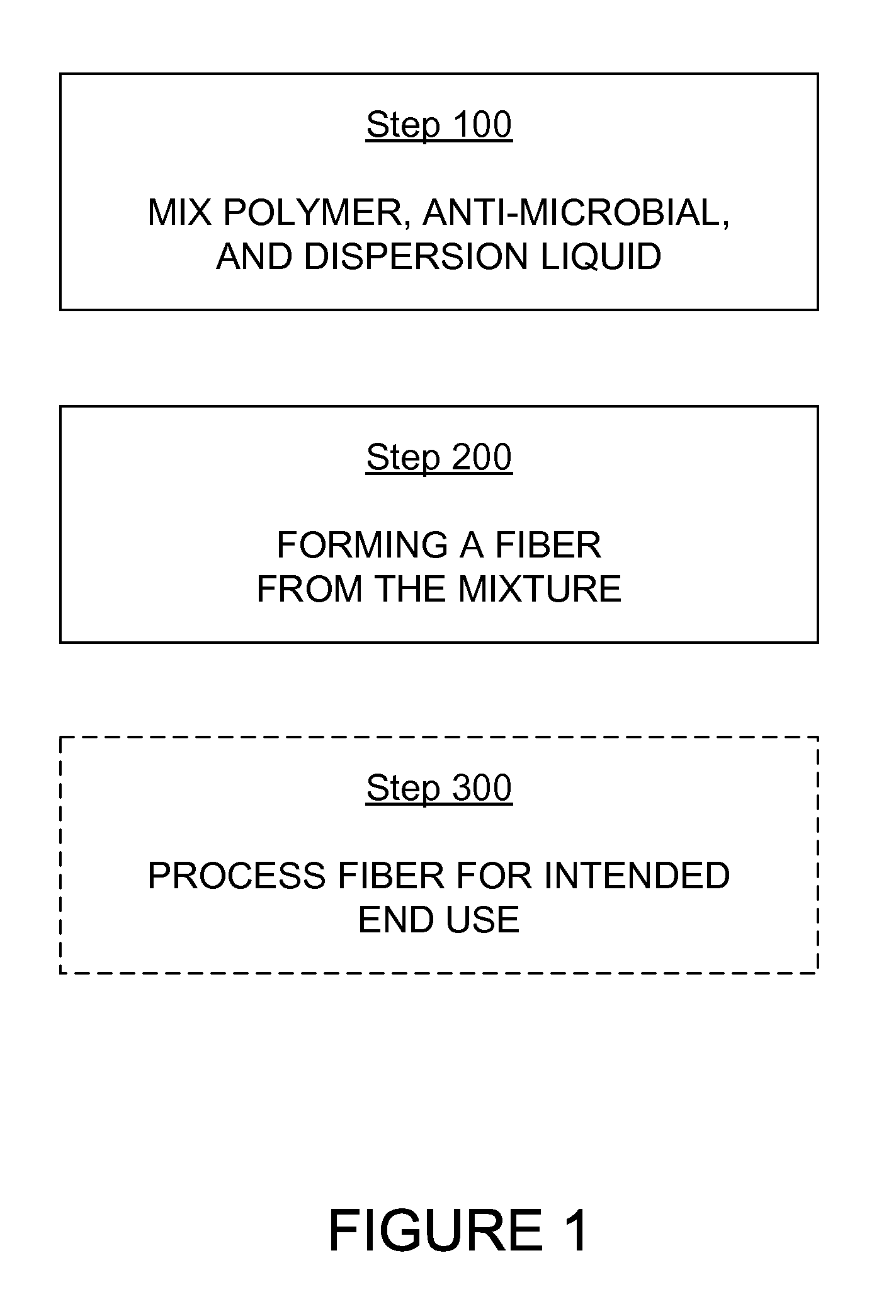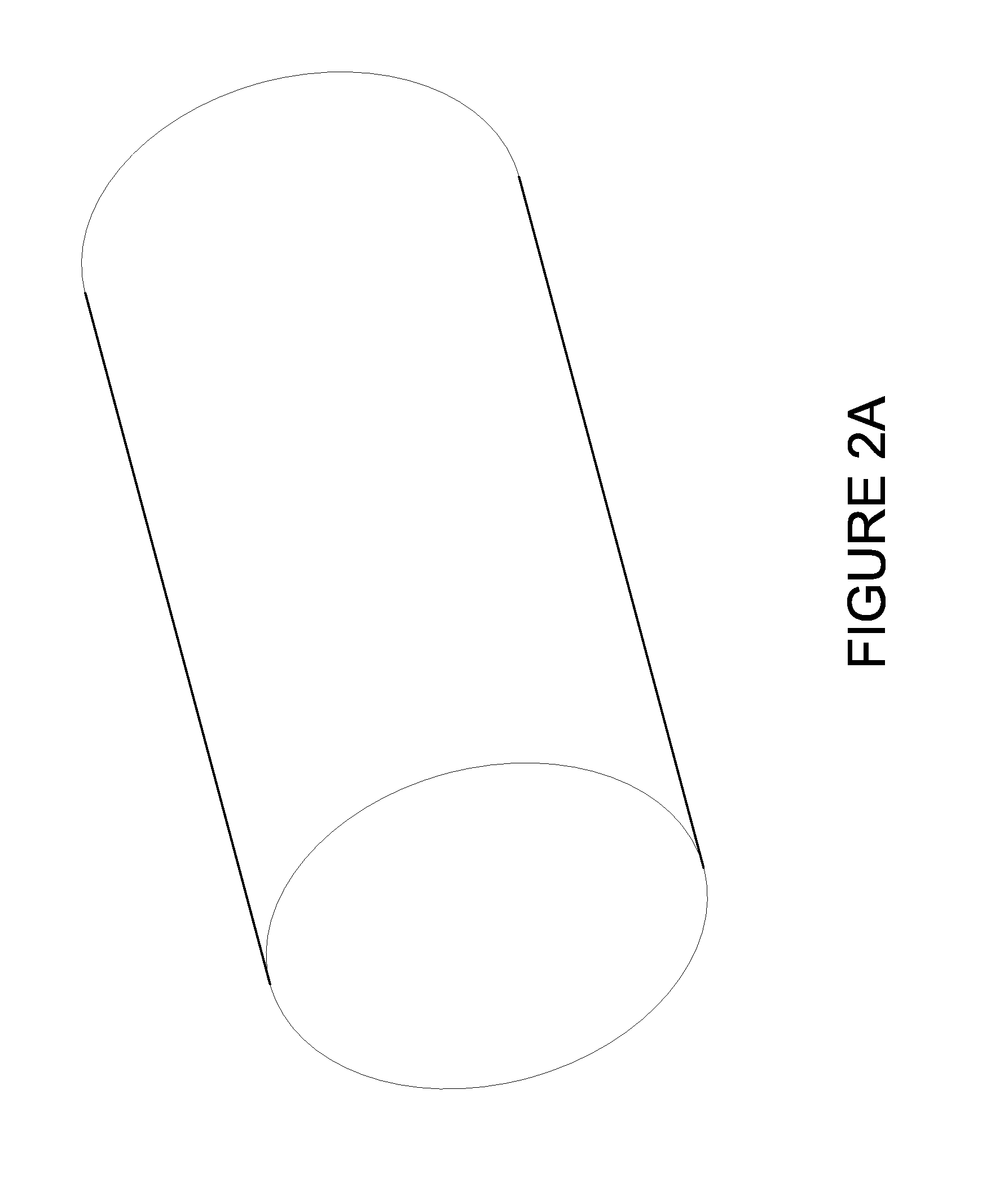Fibers with improving Anti-microbial performance
a fiber and anti-microbial technology, applied in the field can solve the problems of fibers and fabrics produced with known methods losing their effectiveness, fibers with a significant amount of additives not being able to reach the level of tenacity, and fibers with a significant amount of additives not being able to achieve the effect of preventing wrinkles
- Summary
- Abstract
- Description
- Claims
- Application Information
AI Technical Summary
Benefits of technology
Problems solved by technology
Method used
Image
Examples
Embodiment Construction
[0019]The present invention provides methods for generating fibers and fabrics with improved anti-microbial properties and characteristics. The present invention further relates to the fibers themselves. In a preferred embodiment, the present invention includes fibers that have been infused with an anti-microbial agent and a dispersion liquid, and which exhibit improved performance with repeated launderings.
[0020]Referring first to FIG. 1, there is an illustration of a method for generating fibers with improved anti-microbial properties and characteristics. At Step 100 a mixture is created, the mixture including a polymer, an anti-microbial alloy powder, and a dispersion liquid. As used herein, a polymer refers to a compound suitable for fiber and fabric generation including, but not limited to, a thermoplastic polymer, polyester, nylon, rayon, polyethylene (PE), polypropylene (PP), polyethylene terephthalate (PET), polyethylene terephthalate glycol (PETG), co-PET, polylactic acid (...
PUM
| Property | Measurement | Unit |
|---|---|---|
| length | aaaaa | aaaaa |
| particle size | aaaaa | aaaaa |
| particle size | aaaaa | aaaaa |
Abstract
Description
Claims
Application Information
 Login to View More
Login to View More - R&D
- Intellectual Property
- Life Sciences
- Materials
- Tech Scout
- Unparalleled Data Quality
- Higher Quality Content
- 60% Fewer Hallucinations
Browse by: Latest US Patents, China's latest patents, Technical Efficacy Thesaurus, Application Domain, Technology Topic, Popular Technical Reports.
© 2025 PatSnap. All rights reserved.Legal|Privacy policy|Modern Slavery Act Transparency Statement|Sitemap|About US| Contact US: help@patsnap.com



